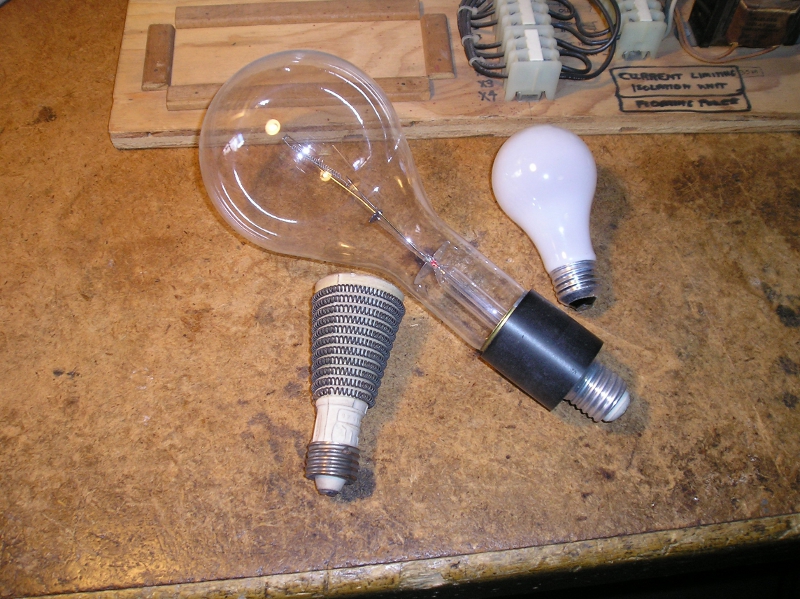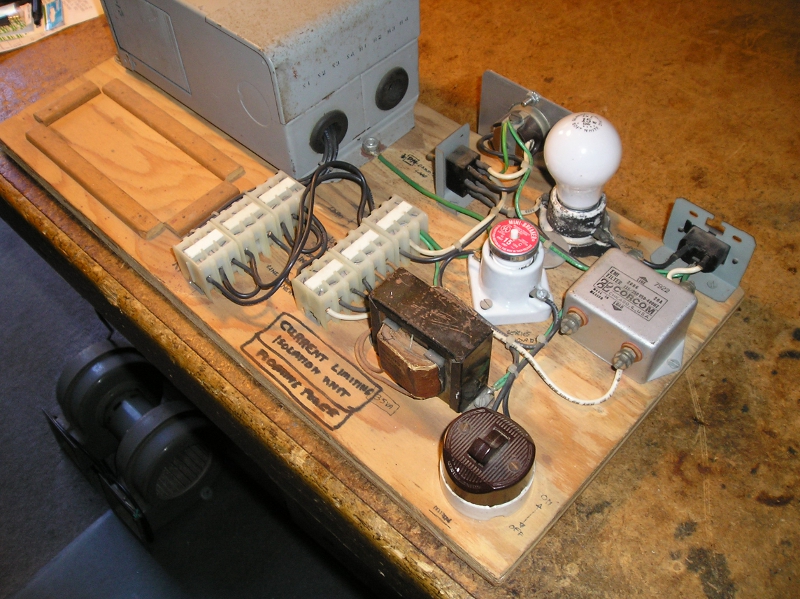Introduction
It is dangerous to "float", or operate test equipment ungrounded, but is frequently done to eliminate ground loops, or because the test circuit is voltage referenced above ground. Likewise, when working with 120 vac powered circuits, there is a shock hazard, and an arc flash hazard should something get shorted during test. This isolation unit minimizes both of these hazards by floating the test circuit, such that grounded test equipment may be safely connected, and by allowing a ballast resistance, a fuse, or an Edison-based circuit breaker to be placed in series with the incoming power, thus limiting the maximum short circuit current flow.
Description
The circuit is built on a large piece of plywood, allowing all components to be easily mounted and wired. It contains terminal blocks to allow reconfiguration of the isolation transformer wiring, allowing non-standard voltages to be generated. It contains an area where a standard solderless breadboard may be placed.
There are two isolation transformers installed in my prototype, although the smaller one has fallen into disuse. The main isolation transformer is a large 1.5 kva 120/240 volt unit, with dual primary and secondary windings. Input power is via a standard DIN connector, allowing various power cords to be connected. Output power is via a standard Nema 5-15R receptacle. Power is controlled with a heavy duty snap on/off switch.
The terminal blocks serve dual purposes: (1) allow reconfiguration of the isolation transformer winding connections, and (2) provide a place where test circuits may be connected (typically between the transformer and the Load Selector switch).
Typical ballast resistors
 Edison-based circuit breaker
Edison-based circuit breaker

This unit was originally developed to allow safe testing of programmable light dimming controls. It allows the control circuit to be isolated from ground so that an oscilloscope could be connected without causing flame and fire from its normally grounded probe common lead. The Load Selector switch allows either a small internal (15 watt 120 vac light bulb) or external load to be connected to the isolated test circuit.


